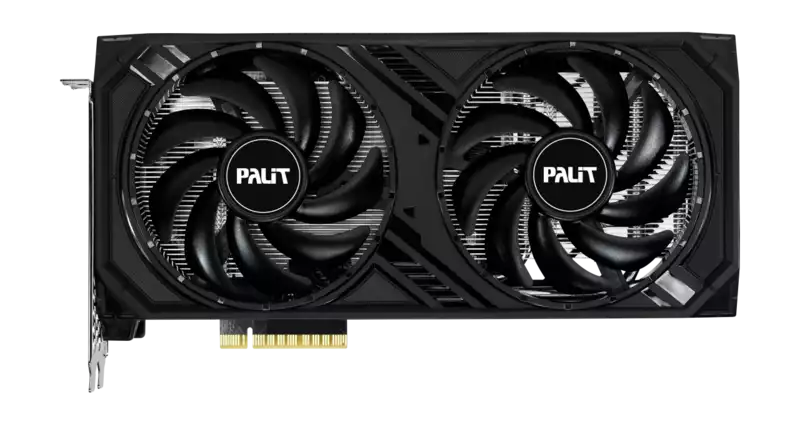For the past several years, almost all graphics cards have had PCIe x16 electrical connections. Low-end cards are a recent exception; AMD's Radeon RX 6400 XT actually has an x4 electrical interface, but x8 connections are becoming more common in 2023. The latest examples are the Nvidia GeForce RTX 4060 and RTX 4060 Ti.
The aforementioned cards have x8 electrical connections, but the physical connection remains x16 even though there is no need for it Twitter user @fpsojisan_yt (via Tom's Hardware) found a Palit card that bucks this trend: the Palit GeForce RTX 4060 Dual with x8 physical connections. This is a pretty good idea. For most users, it won't make a huge difference one way or the other, but some users will benefit from it.
The AD107 GPU driving the RTX 4060 has only an x8 electrical interface. This is to reduce manufacturing costs. x8 links are suitable for PCIe 4.0 systems, but performance is slightly degraded on PCIe 3.0 systems and even more so on PCIe 2.0 systems. So while I don't like the idea of a mid-range graphics card with an x8 connection, that's another story. But that is another story.
Cards with PCIe x8 physical connections make a lot of sense for the following reasons. First, such a card will work perfectly in any x16 slot, but having x8 physical connectors gives you more flexibility options. However, it depends on the PCIe lane allocation and the physical configuration of the host system.
PCIe slots are used for more than just graphics cards, but few require the bandwidth of an x16 slot. Some devices, such as quad-slot M.2 SSD add-in cards, are available. In this case, the SSD card can run in a x16 slot and the Palit RTX 4060 in a secondary x8 slot; performance is sacrificed a bit because the GPU must run via chipset link, but gaming is still possible, and of course, multiple monitors with It is also easy to display images on multiple monitors.
Other possible applications include motherboards with a limited number of slots, or systems that require x8/x8 connections to be physically or otherwise split. Some pre-built systems may feature odd configurations. x8 GPUs are useful when used in certain HEDT systems where gaming performance is not a priority or where multiple add-in cards are present.
It is worth noting that x8 physical slots are relatively rare, but if physical x8 graphics cards bring new use cases while losing none, why not? Soon there will be millions of x8 graphics cards on the market. What will future motherboard designs and their PCIe lane configurations mean, both electrically and physically? Fewer slots will leave more room for M.2 slots.
Would this be foresight by Palit?
PCIe x8 graphics cards are here to stay whether we like it or not. It may even be physically x8.


Comments